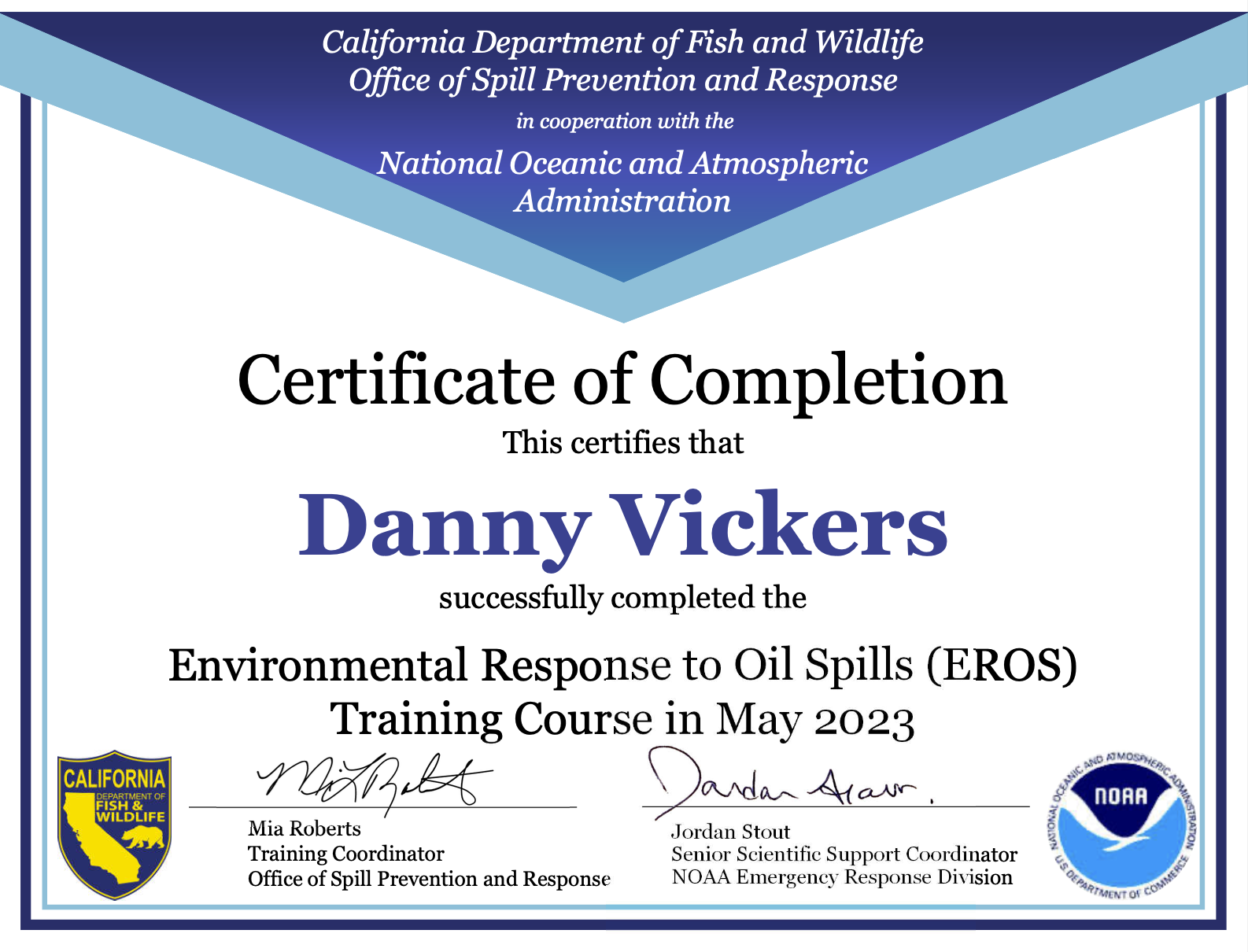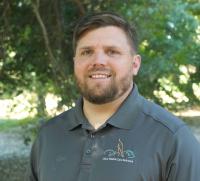
EROS Training 2023: On water oil recovery
As many of you already know I joined the OWCN management team back in June of 2022. Since joining OWCN I have spent my time attending trainings/drills, developing SOPs, maintaining equipment, and even responding to my first oil spill, but all this has mostly related to how we as OWCN respond when there is oiled affected wildlife. So how about oil spill response on a grander scale? It can be easy to get “tunnel vision” within our respected disciplines but I am constantly reminded that there are a lot more moving parts to oil spill response than just the wildlife portion.
To help newcomers like myself and other stakeholders see the grander scale of oil spill response, CDFW OSPR in cooperation with NOAA, hosts a yearly Environment Response to Oil Spills (EROS) training. I had the pleasure of attending the EROS training last month. The 16 presentations that were presented at the EROS training included topics ranging from the federal government’s role in pollution responses to shoreline assessment/clean up endpoints, and everything in between. For today’s blog post I’d like to share a bit about water recovery methods. I hope our readers find the information as interesting as I did!

On water/ offshore spills can happen due to a number of incidents, perhaps a pipeline is hit by an anchor (Pipeline P00547) or a tanker runs aground (Exxon Valdez). Whatever the situation may be oil is released and the mechanism to start a response goes into motion. Unified command is set up and the appropriate ICS structure comes together. Plans to mitigate the spread of product are set into motion. What are some immediate tools that could be deployed by oil spill response organizations (OSRO’s) to contain and mitigate the amount of product that reaches the shore? If you guessed oil booms and skimmers, you are correct.
Booms are used to minimize oil contamination, concentrate oil product for removal and protect resources at risk. The material and type of boom will vary depending on application and product spilled. Common types include sorbent booms or solid/air filled booms. Solid/air filled booms are often used in open water/ offshore oil spills to divert, contain, exclude, or deflect spilled product. However, deployment of booms is highly influenced by the environment, including weather, tides, current, accessibility, etc. Once the spilled product is contained or diverted skimmers can then be used to collect the product off the water.
There are a variety of skimmers used to collect oil products which include: suction, weir, disc, drum, sorbent belt and brush. The type of skimmer used is going to be dependent on oil type, condition, viscosity, environmental factors (weather, tides, & current), physical factors (debris & slick thickness) and amount of product. Once the oil is collected it is quantified and stored as hazardous waste until environmental services can either reclaim/recycle the product or dispose of it.
This brief overview is only a snapshot into some of the tools that are used in on water oil recovery and mitigation. There are other methods such as burning product, use of dispersants and allowing the oil to naturally weather and break down. But again, the methods used in oil recovery are going to be highly dependent on product, environmental conditions and resources at risk.
I have only scratched the surface of oil recovery here. However, I hope that this blog post, and all OWCN’s posts, help reinforce the idea to not only the public but even those of us in the field , that there is more to oil spill response than meets the eye. By sharing different facets of oil spill response together we can become a stronger asset to protecting our environment.
Special thanks to CDFW OSPR and NOAA for hosting EROS 2023, all the instructors/ presenters, and my fellow EROS student attendees.

Danny Vickers
Wildlife Logistics Specialist
